Hawke Sidewinder 30 4-16x50 SF Scope Review: A Top Hunter
- Last updated: 01/10/2025
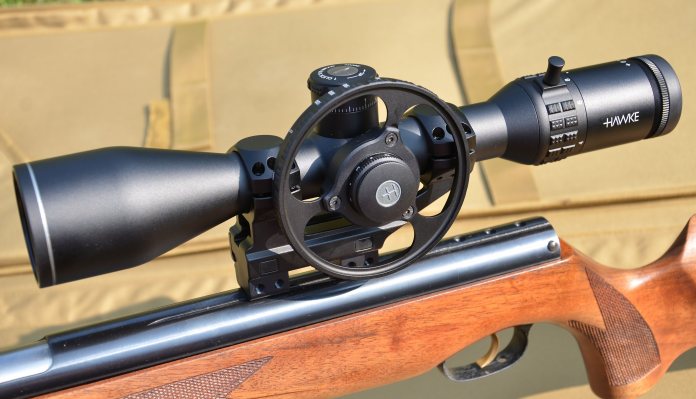
Hawke operates a rolling development programme, ensuring constant refinement in a highly competitive market where standing still means falling behind. The brand’s ‘H’ logo, styled like a reticle, is a trusted mark for shooters seeking reliable, functional optics without premium prices. The Sidewinder 30 range was recently revamped and now comes packed with features.
On test is the Sidewinder 30 4-16x50 SF 10x Half Mil. At 725g, it’s a bold piece of glassware, but the weight brings a quality feel, and there’s a slick finish too. The knurled power dial seamlessly blends into the monocoque body tube, while the recessed silver cap on the snap-open push-pull turrets adds a smart touch. Small details, but they matter.
Retailing at around £489, it’s a little pricey for Hawke but mid-market overall. The box includes lens covers, a cloth, a 4” side-wheel, a 4” sunshade, a throw lever, an Allen key, a battery, a reticle booklet, and a manual, giving plenty of extras for the price.
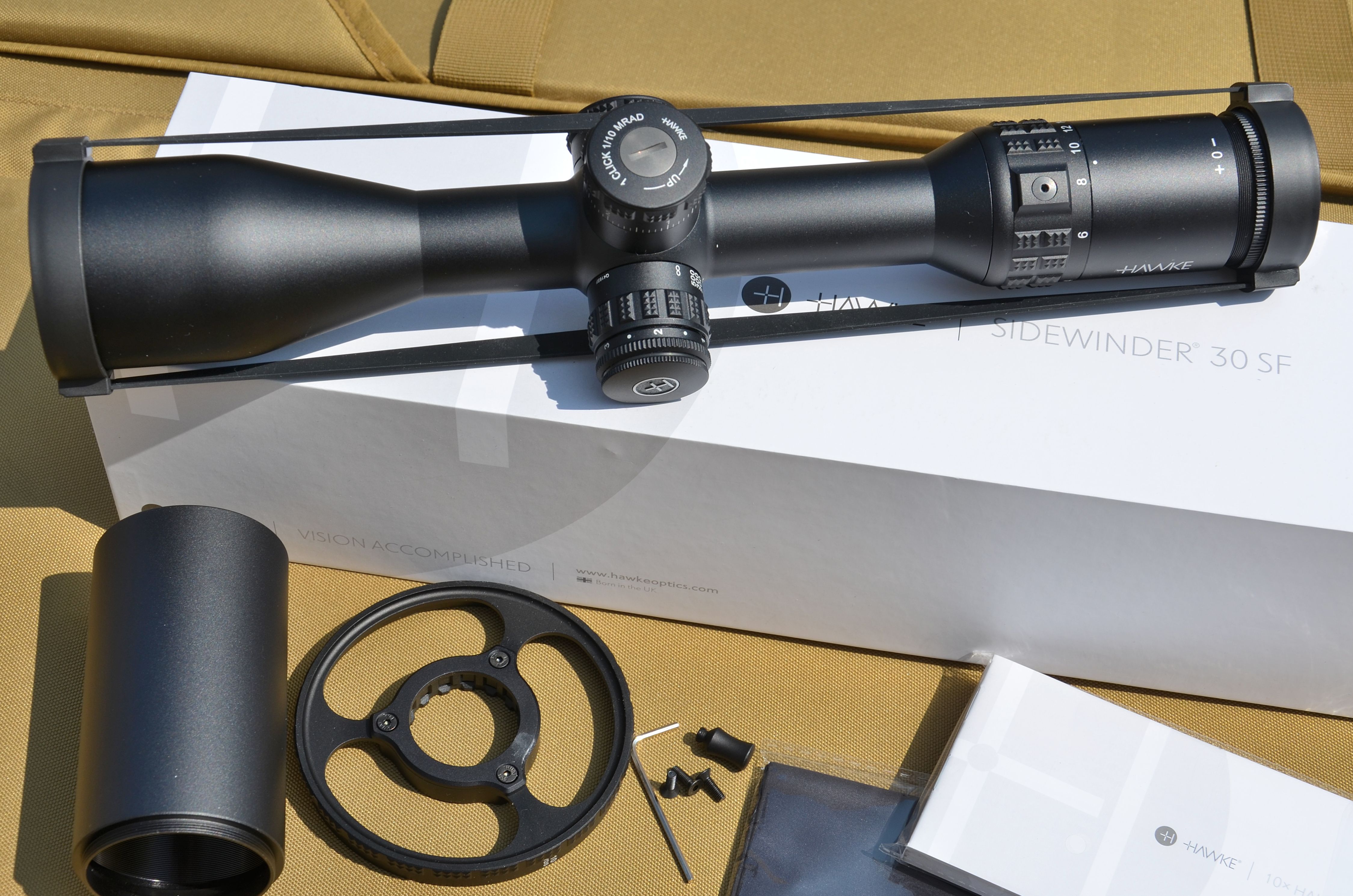
The Hawke Sidewinder 30 4-16x50 SF 10x Half Mil comes with several accessories
The 30 in the model name denotes a 30mm body tube, and mounting this scope is straightforward with the appropriate mounts, but just be aware that clearance needs to be allowed for when the sidewheel is installed. The first task, as usual, is to use the fast focus bell at the rear ocular to adjust for a crisp reticle and subject.
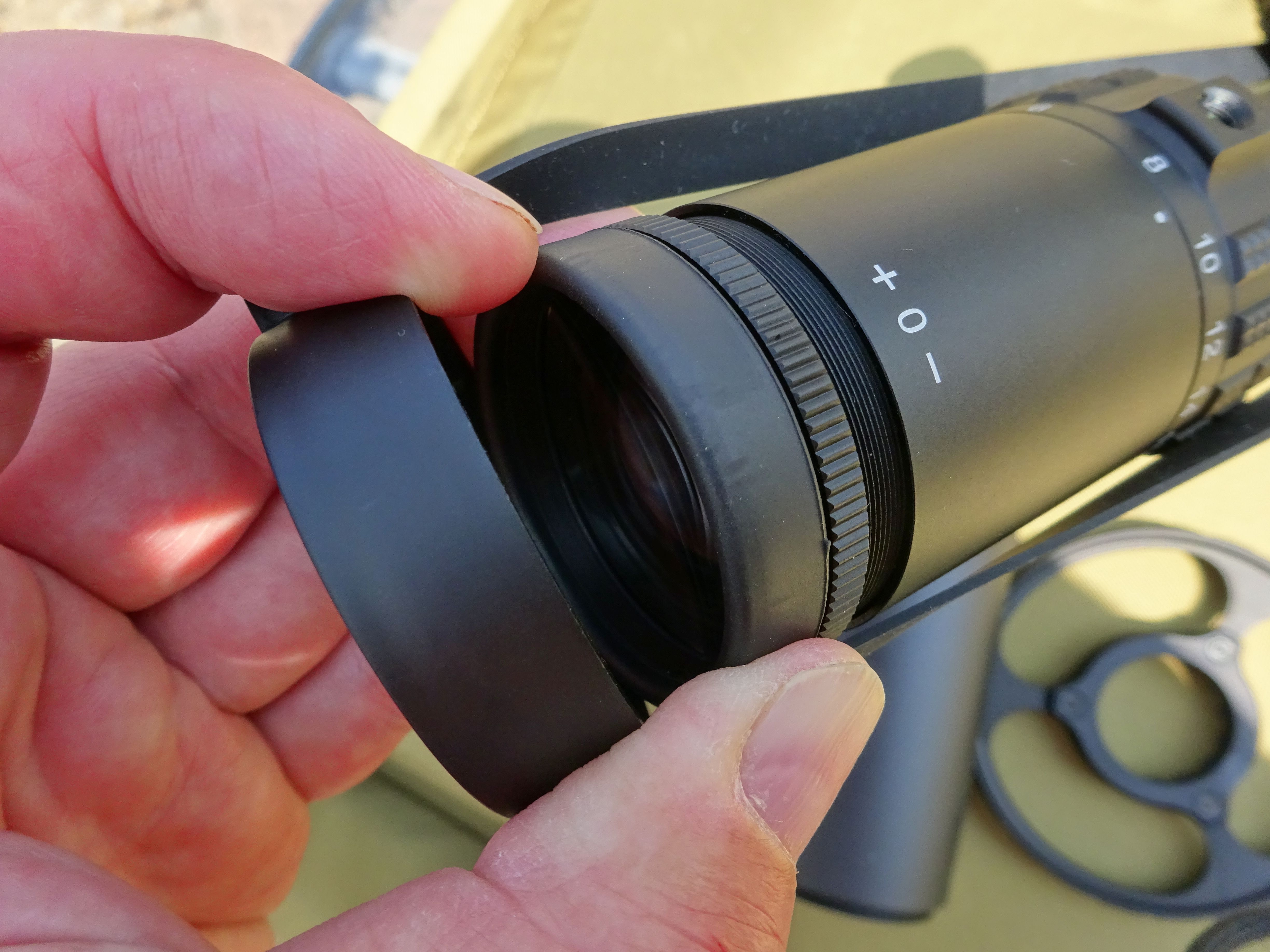
Note the elasticated lens covers and rubber-coated fast focus bell
To install the 4” sidewheel, first unscrew the three screws in the fixing plate and remove it. The wheel then pushes over the left turret so that the marked range figures match up. Next, replace the locking plate and screw it up fairly tight. This proved a fiddly operation, but once it’s on and set, the job’s a good ‘un, as they say.
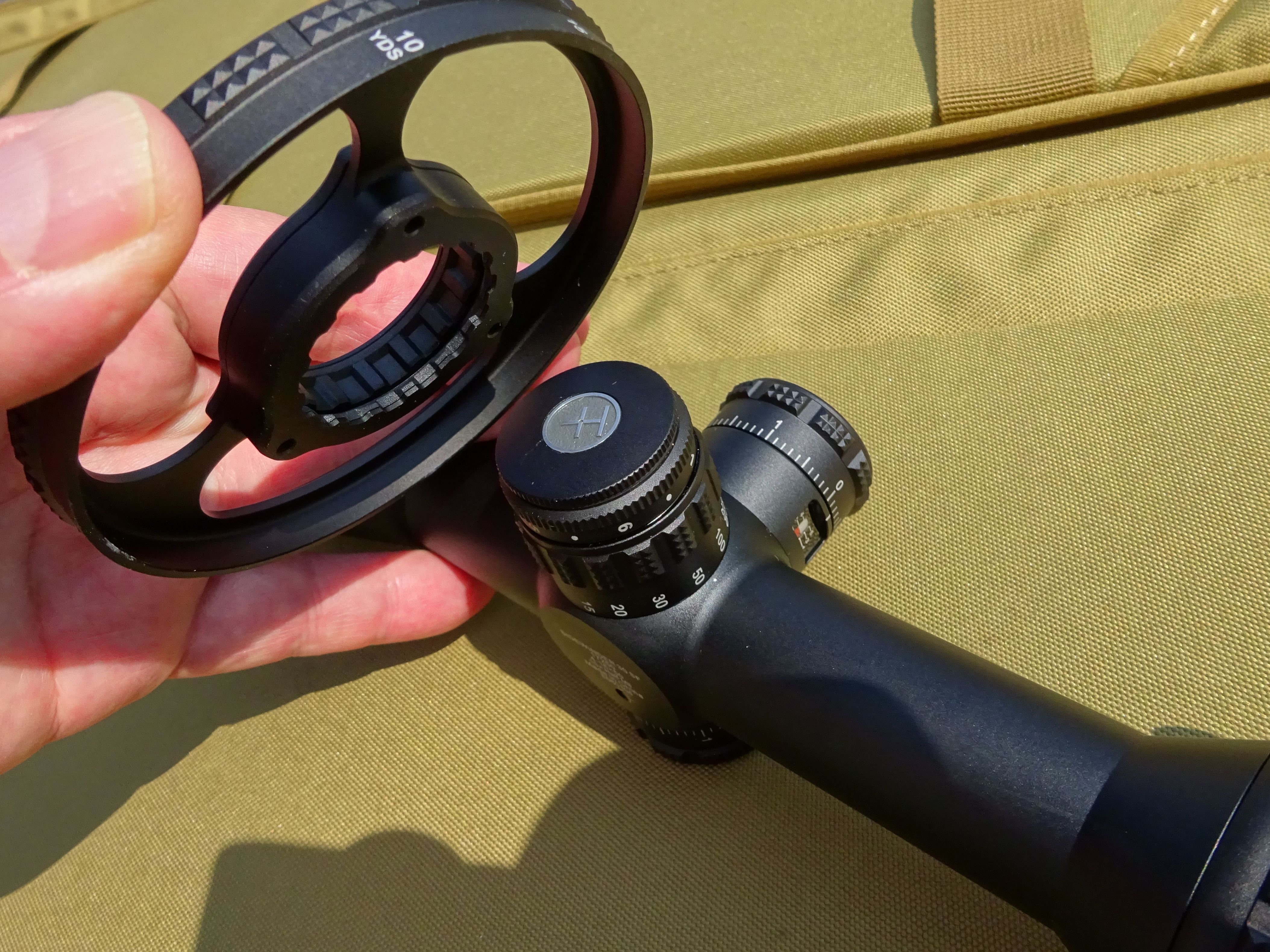
The sidewheel was a bit fiddly to fit
The outer ring of the left turret is the rheostat for the illuminated reticle, which has six marked brightness levels, with off positions in between each. Unscrew the end cap, and the coin battery can be dropped into place. Switch it on, and the central section of the reticle, four Mil marks across, illuminates in red.
The final task is to attach the throw lever if it’s deemed necessary, and this is a simple operation. Just remove the blanking screw on the magnification ring, and thread the lever into position. Magnification thereafter is smooth and precise, from 4x right up to 16x, with a perfect level of resistance felt.
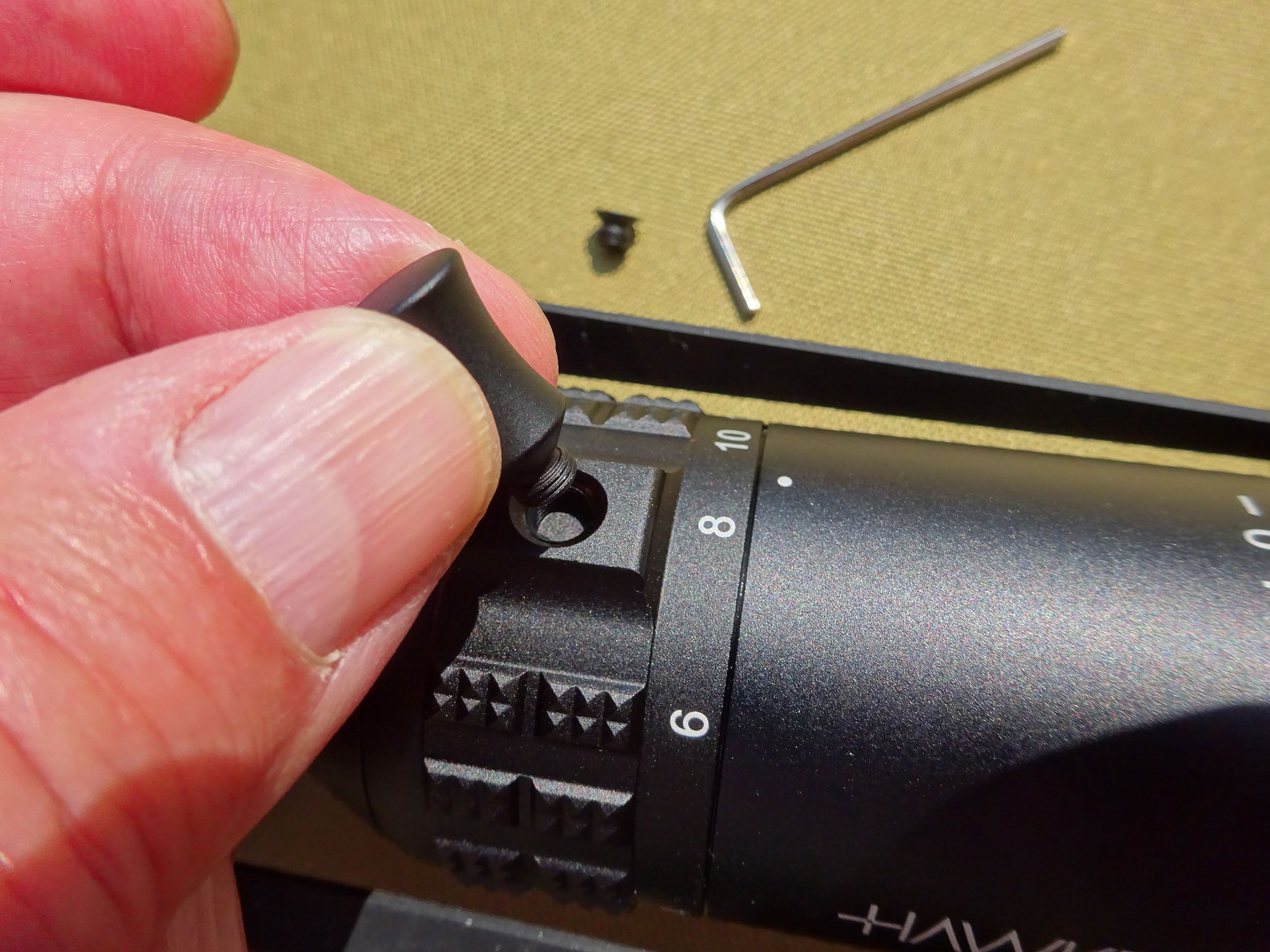
With the grub screw removed, the throw lever just screws into place
The eye relief, at 4”, is quite long with this model, and whilst that doesn’t sound good in terms of introducing more parallax error, the reality is that head position is critical in order to achieve a full sight picture. Thus, a consistent head position is encouraged.
The scope comes with push/pull-style turrets, so pull up, adjust to zero, and push down to lock. Clicks feel very positive and are properly audible, which is perfect.
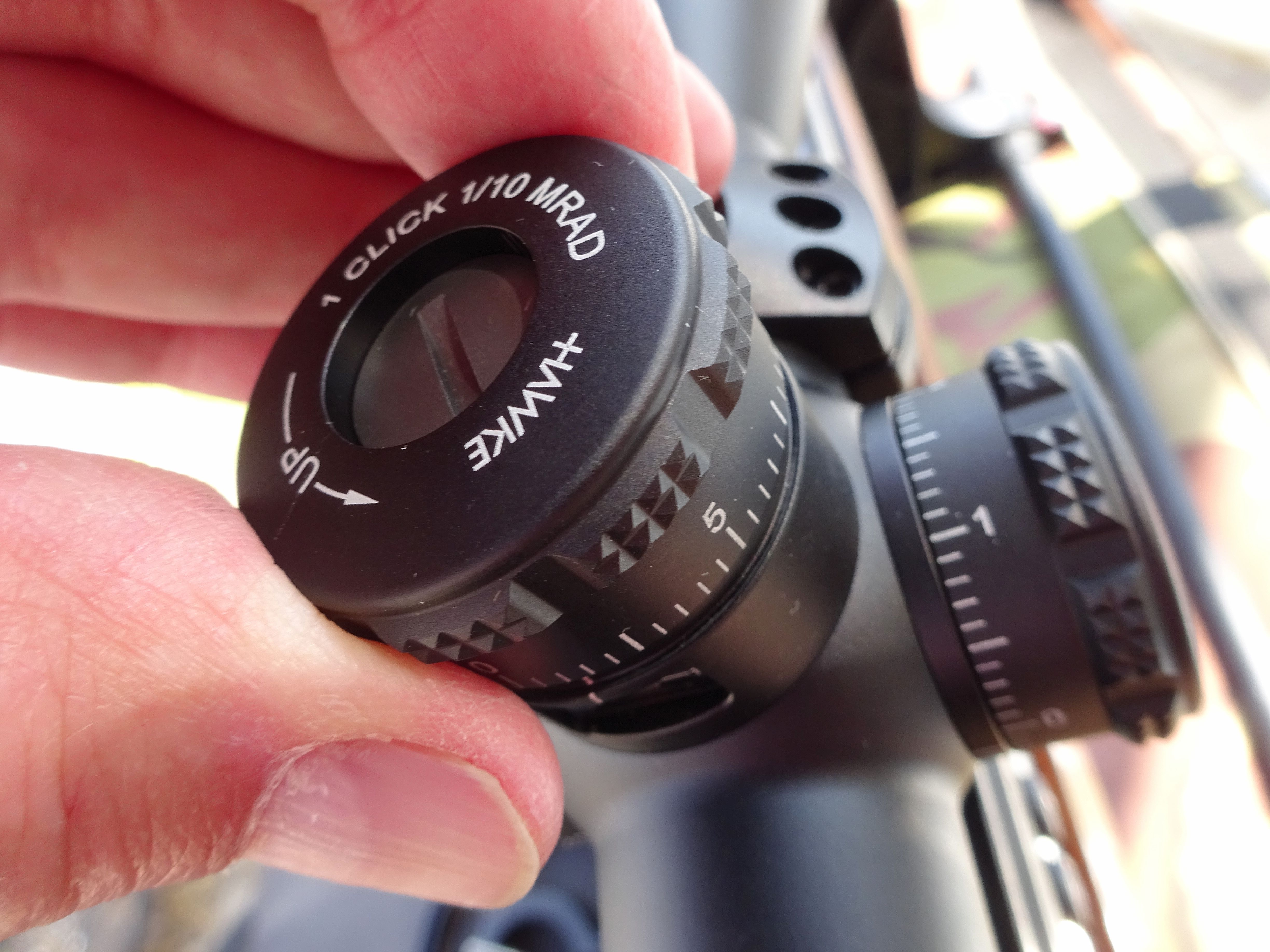
The tactical turrets are push/pull lockable
With the windage and elevation adjusted and set, both turrets can be set to show a ‘0’ starting point by unscrewing their respective silver caps with a coin or screwdriver, lifting the cap, replacing it at the ‘0’ mark, and re-tightening. On test, all adjustments proved consistent, precise, and repeatable.
As for the sidewheel, the range-finding properties experienced on an FT scope are largely irrelevant here, with the comparatively low magnification. Yet smooth and fast parallax adjustment in a hunting scenario makes it well worth the effort, with the usual caveat that the marked distances (10 yards, 15, 20, 30, 50, 100, 200, 300, 500, and infinity) are a guide only.
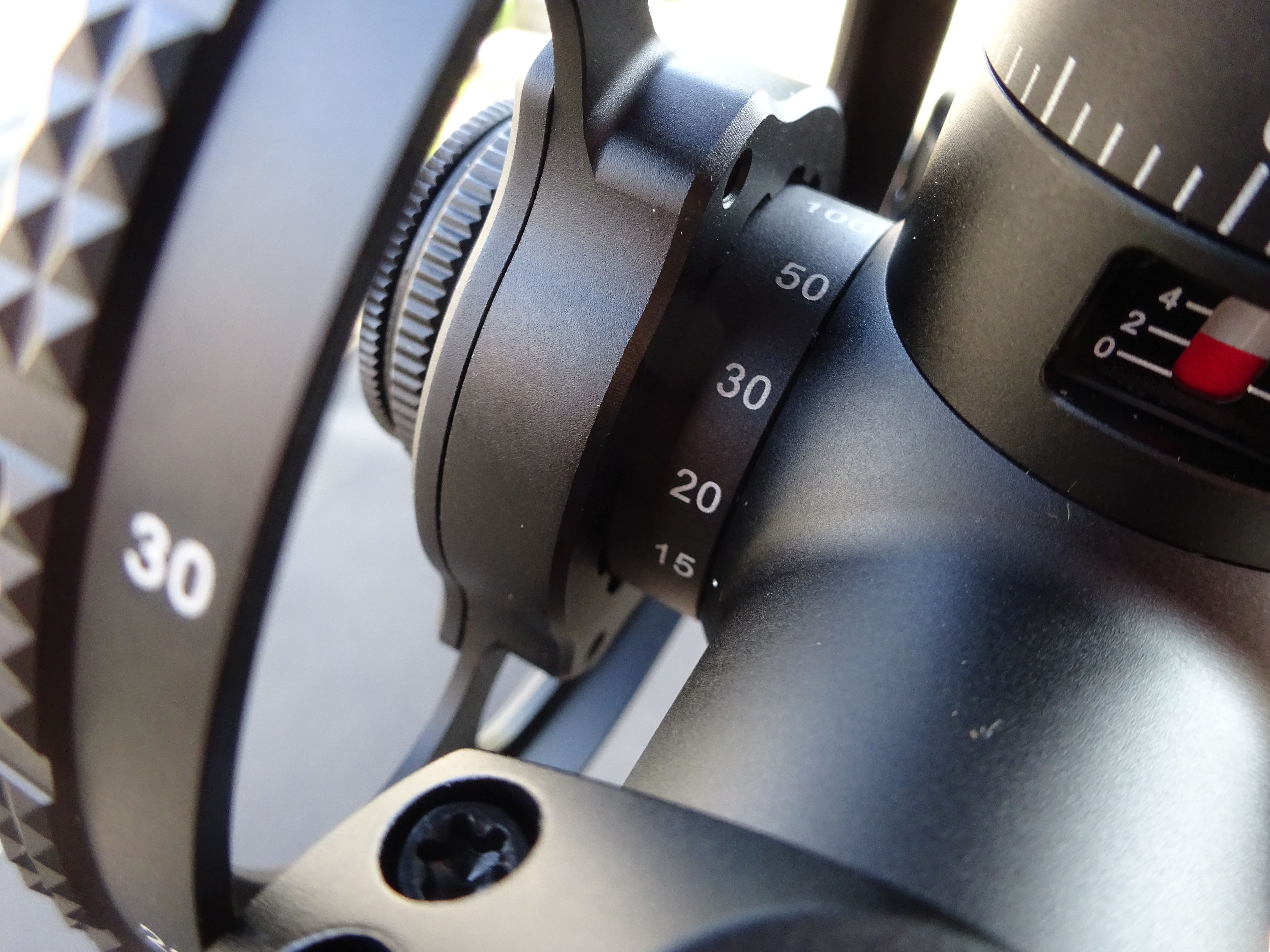
Sidewheels are designed to accentuate the range markings; the larger arc allows more accurate readings in theory
The latest Sidewinder specification includes a witness window on the main elevation turret, so the user can instantly see where the turret sits within its adjustment range. If the red block shows halfway up, the adjustment is centred, and this obvious visual indicator avoids basic aiming errors.
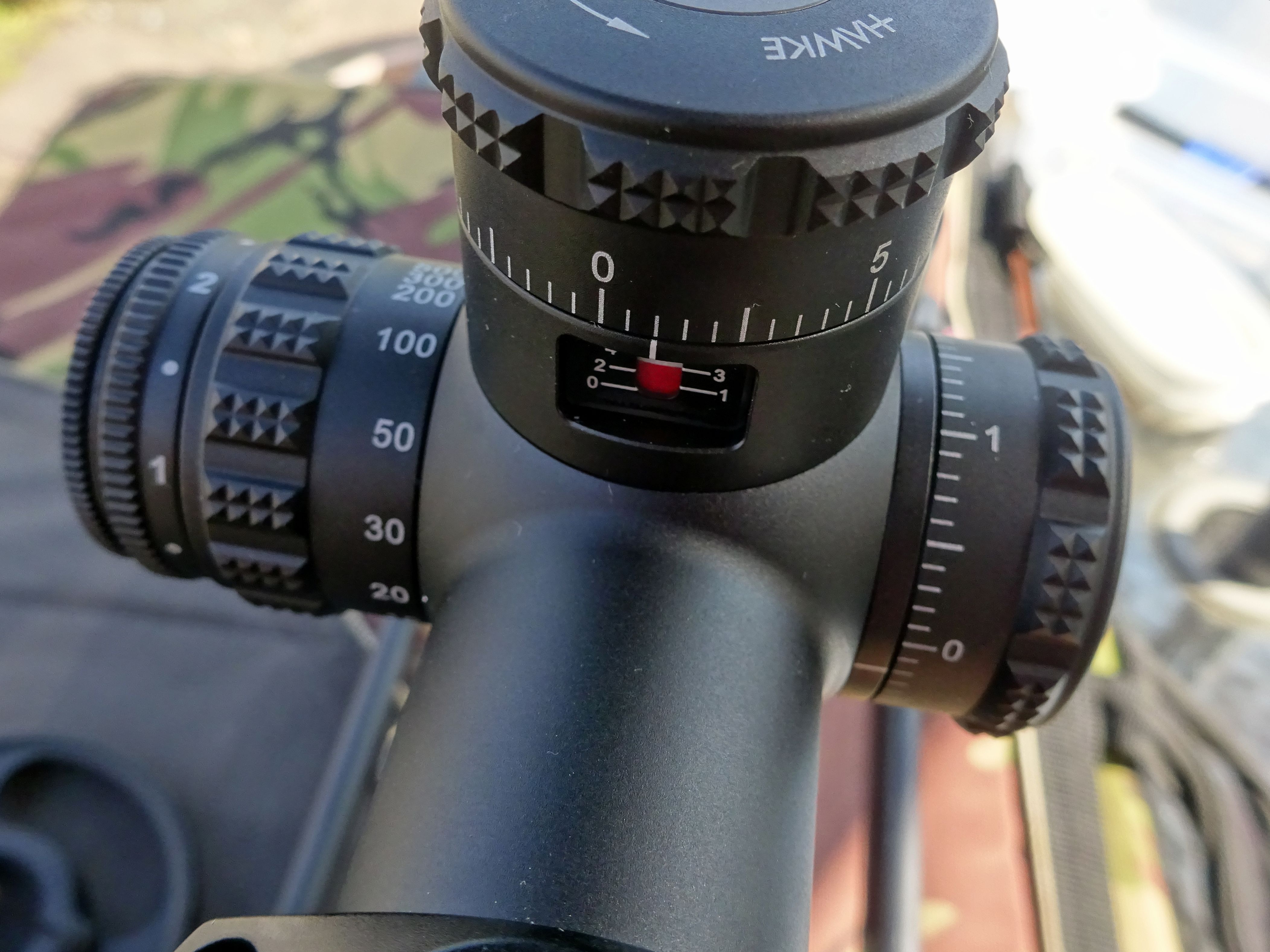
This shows the rheostat control and parallax dial (left), and the elevation turret with witness window
I have the benefits of this ingrained in my mind, with the often-recounted story of my old mate, Dave Welham, in the Airmasters days, who was in a shoot-off for the British Open FT title way back in 1984. Dave took his shot with the turret a full turn out. He missed by miles, only to instantly realise his technical error.
This Sidewinder would have spared him his blushes, and us his understandable expletives! But hey, character building, as my good old dad would have said!
This scope is undoubtedly primarily a hunting tool, with that sizable 50mm objective, but it’s well worth noting that, with the mag set to 8x, a 15mm kill zone when viewed at 25 yards can be bracketed perfectly via the Half Mil spec. That’s handy if the occasional HFT event is planned, even though that’s not what this model was designed for. Wind up to 16x, and crisp detail awaits.
I love the floating 10x Half Mil reticle, and it’s classic Hawke, offering refinement and an abundance of aiming/reference points, along with a Christmas tree of windage marks. As usual, the fine stadia can get lost as the light fades, but that’s the time to use the illumination.
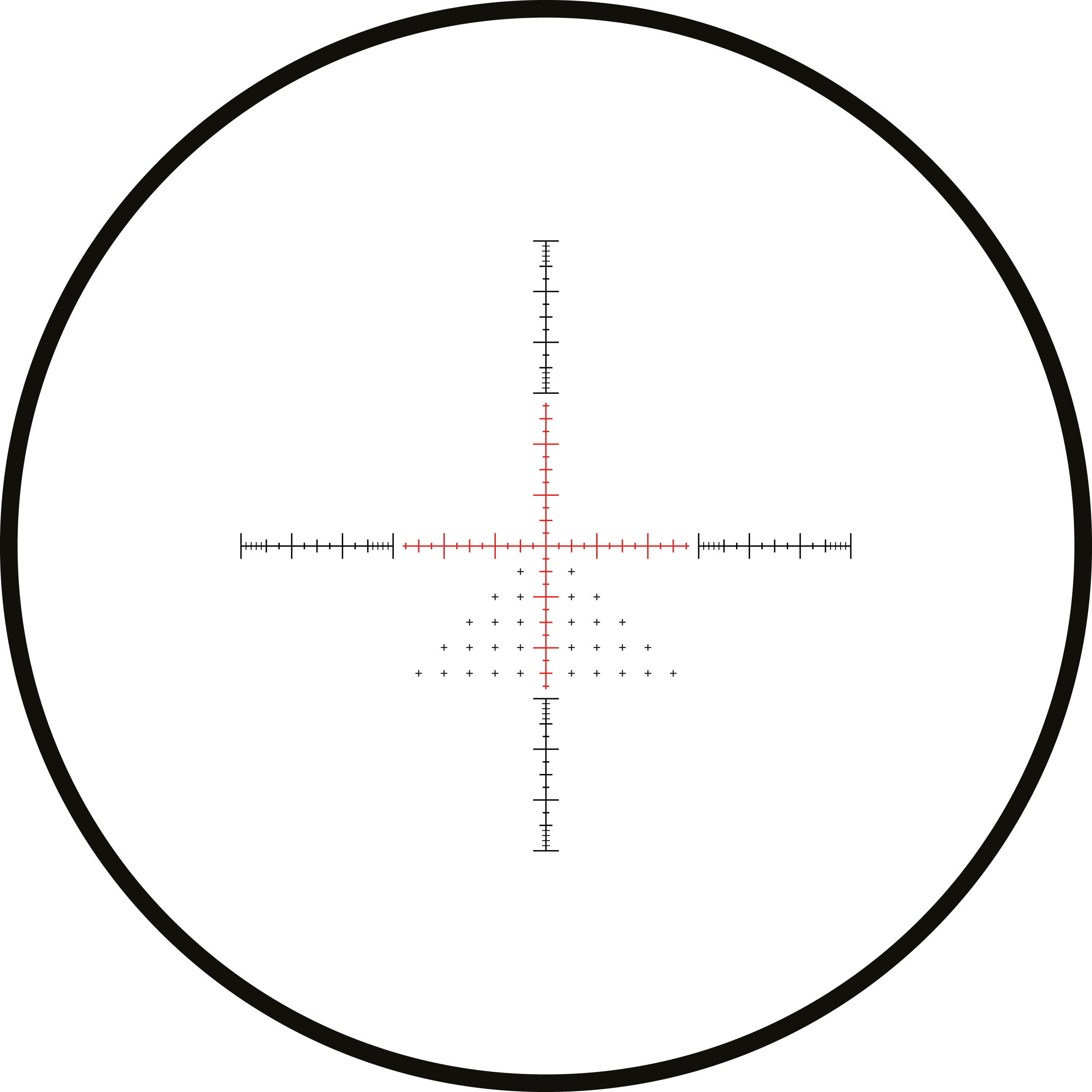
The 10x Half Mil illuminated reticle offers an abundance of reference points and information
This Sidewinder looks and feels the part. It’s slick, well presented, and perfect for hunting.